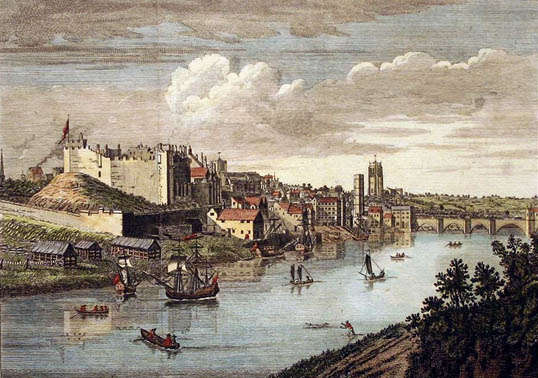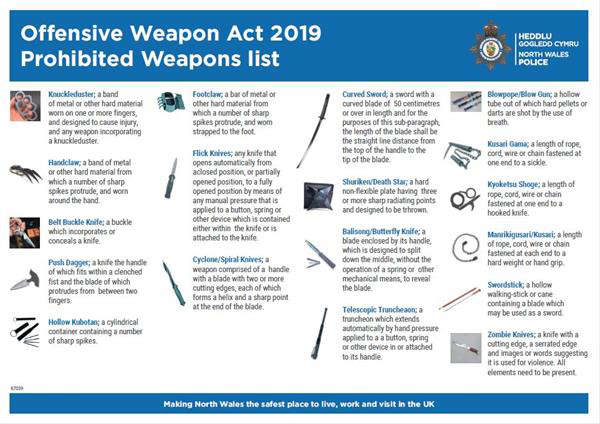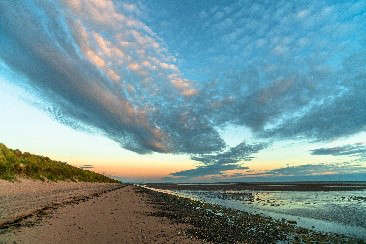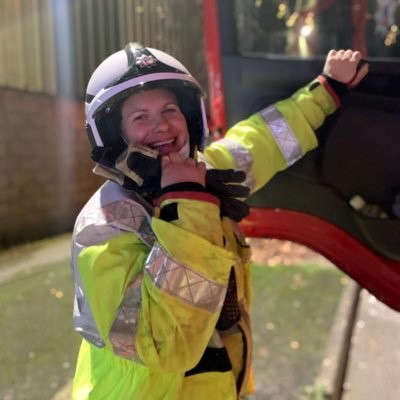
We have very little evidence for how the Romans constructed the port that was attached to the Legionary Fortress at Chester.
However there is a theory out there, which has not been open to discussion - it is just how the archaeologists have decided it must have looked.
When Channel 4 started its “Britain’s Most Historic Towns" series with Chester (narrated by Alice Roberts), back in April 2018, there was a visualisation of a very very long pier. This is the official archaeological explanation for the port.
Basically the archaeologists claim that the river in Roman times flowed where it does today, and at higfh tides expanded across the racecourse towards Chester. Based on a stake and some tiles found in the 19th century, they claim there was a 400 metres long pier, either from the so-called Roman Quay, or from Watergate, or thereabouts. This visualisation looks highly unlikely to me, but the archaeologists seem convinced that was how it was done. They wont permit any dissent.
If you visit the Roodee Interpretation Hub called The Wing on Nun’s Road, nearly opposite The Architect, you will see an artist’s impression of a creek, with a dock containing a rigged ship, wooden houses, a road and mud flats. The impression refers to the dip in the line of the city walls here, where the walls curve inwards. It is believed this was the outlet of a stream, but it could also have been caused by the River Dee cutting into its margins.
Current thinking is that in Roman times the River Dee flowed where it does now, and they needed a 400-metre long pier to reach it. So, it is supposed, had you stood here in Roman times, the port would have been to the right of your line of view. But another possibility is that the river followed a meander, meeting the rising ground at the creek by The Wing. If so, you would have been looking along the axis of the river, with the Roman harbour on your immediate left.
Up until the beginning of the 18th century the river turned sharply north-east towards the Watergate, in the form of a meander, rather than in a straight line. It crossed what is now Chester Racecourse, and then followed quite close to the medieval city wall to the Water Tower, near the north-west corner of the city walls. This tower stood within the river channel. The improved navigation in the 1730s forced the river channel westwards, west of a line between Wilcox Point (where the railway crosses the river) and the Water Tower. The Water Tower is now 200 metres from the modern river.
In Roman times this sharp turn was further south. As the river came through the narrow gap between the Castle and Handbridge it was deflected by the steeply rising ground, crested by Curzon Park North today. This forced the channel towards the Chester side of the valley, where the creek at The Wing shows how the river cut in on that side before the Romans came. The Romans found a solution to this erosion by constructing a massive stone wall, just where the river channel turned north. This can still be seen today, starting just a little north of The Wing.
Known today as the Roman Quay, this refers to the remains of a massive wall of large stone blocks, and a railed excavation in front shows its foundations ran deep. In 1884 they dug down fifteen feet (about 4.5 metres) at the face of this wall, and still had not reached the foundations. The magnitude of this wall, which is about 250 metres long, is a puzzle, but if you accept the idea that there was a meander here in Roman times, this is where it reached the Chester side. The Roman Quay was almost certainly constructed to stop the river undercutting Chester.
However, over time, as the steep rise to Curzon Park was eroded, this changed the angle of the turn. The meander migrated, the point of impact gradually shifting northwards, requiring further shoring of the bank, until it reached Watergate in early modern times. It is hard to visualise the Roman Port today because the landscape is so much altered. The view from The Wing was right up close to a busy Roman port.

 Protecting people from the sun
Protecting people from the sun
 Come and speak to North Wales Police
Come and speak to North Wales Police
 Council to start enforcement of moving traffic offences
Council to start enforcement of moving traffic offences
 Supporting people on their journey to employment
Supporting people on their journey to employment
 Ian Puleston-Davies opens new staff wellbeing hub at Countess of Chester Hospital NHS Foundation Trust
Ian Puleston-Davies opens new staff wellbeing hub at Countess of Chester Hospital NHS Foundation Trust
 One week to the Council’s event to help you switch to electric vehicles
One week to the Council’s event to help you switch to electric vehicles
 Rural Crime Team equipped with mobile defibrillators
Rural Crime Team equipped with mobile defibrillators
 New online hub for the Dee Estuary
New online hub for the Dee Estuary
 Chester and Wirral Football League - Latest Results
Chester and Wirral Football League - Latest Results
 Is being a wholetime firefighter the job for you?
Is being a wholetime firefighter the job for you?
 RISING YOUNG MUSICAL THEATRE STAR SET TO JOIN CHESTER CHOIR AS SPECIAL GUEST
RISING YOUNG MUSICAL THEATRE STAR SET TO JOIN CHESTER CHOIR AS SPECIAL GUEST
 CHESHIRE WOMEN’S CRICKET LEAGUE - LATEST RESULTS
CHESHIRE WOMEN’S CRICKET LEAGUE - LATEST RESULTS
 Local MP has pledged support for those suffering with endometriosis
Local MP has pledged support for those suffering with endometriosis
 Make History: Build a Future Free From Homelessness
Make History: Build a Future Free From Homelessness
 Council prosecutes Chester businesses for illegal tobacco offences
Council prosecutes Chester businesses for illegal tobacco offences
 Cheshire Constabulary to support national operation to cut out county-wide knife crime
Cheshire Constabulary to support national operation to cut out county-wide knife crime
 Chester FC Community Trust marks Mental Health Awareness Week
Chester FC Community Trust marks Mental Health Awareness Week
 CLASSICAL MUSIC STARS OF THE FUTURE SET TO TAKE CENTRE STAGE AT CONCERT SEASON FINALE
CLASSICAL MUSIC STARS OF THE FUTURE SET TO TAKE CENTRE STAGE AT CONCERT SEASON FINALE
 Foster Care Matters Fostering Agency launches in Chester
Foster Care Matters Fostering Agency launches in Chester
Comments
Add a comment